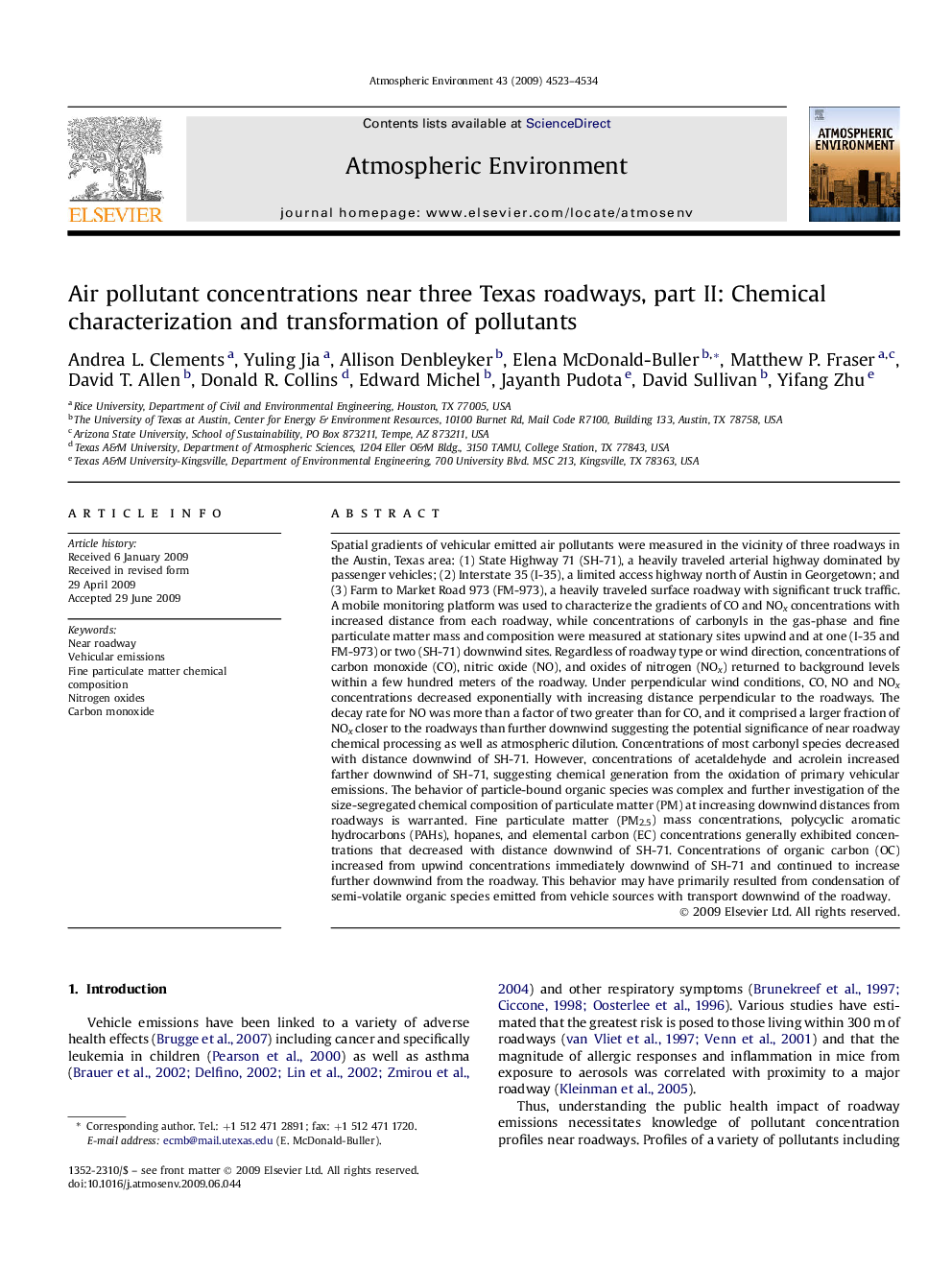| Article ID | Journal | Published Year | Pages | File Type |
|---|---|---|---|---|
| 4440747 | Atmospheric Environment | 2009 | 12 Pages |
Spatial gradients of vehicular emitted air pollutants were measured in the vicinity of three roadways in the Austin, Texas area: (1) State Highway 71 (SH-71), a heavily traveled arterial highway dominated by passenger vehicles; (2) Interstate 35 (I-35), a limited access highway north of Austin in Georgetown; and (3) Farm to Market Road 973 (FM-973), a heavily traveled surface roadway with significant truck traffic. A mobile monitoring platform was used to characterize the gradients of CO and NOx concentrations with increased distance from each roadway, while concentrations of carbonyls in the gas-phase and fine particulate matter mass and composition were measured at stationary sites upwind and at one (I-35 and FM-973) or two (SH-71) downwind sites. Regardless of roadway type or wind direction, concentrations of carbon monoxide (CO), nitric oxide (NO), and oxides of nitrogen (NOx) returned to background levels within a few hundred meters of the roadway. Under perpendicular wind conditions, CO, NO and NOx concentrations decreased exponentially with increasing distance perpendicular to the roadways. The decay rate for NO was more than a factor of two greater than for CO, and it comprised a larger fraction of NOx closer to the roadways than further downwind suggesting the potential significance of near roadway chemical processing as well as atmospheric dilution. Concentrations of most carbonyl species decreased with distance downwind of SH-71. However, concentrations of acetaldehyde and acrolein increased farther downwind of SH-71, suggesting chemical generation from the oxidation of primary vehicular emissions. The behavior of particle-bound organic species was complex and further investigation of the size-segregated chemical composition of particulate matter (PM) at increasing downwind distances from roadways is warranted. Fine particulate matter (PM2.5) mass concentrations, polycyclic aromatic hydrocarbons (PAHs), hopanes, and elemental carbon (EC) concentrations generally exhibited concentrations that decreased with distance downwind of SH-71. Concentrations of organic carbon (OC) increased from upwind concentrations immediately downwind of SH-71 and continued to increase further downwind from the roadway. This behavior may have primarily resulted from condensation of semi-volatile organic species emitted from vehicle sources with transport downwind of the roadway.
